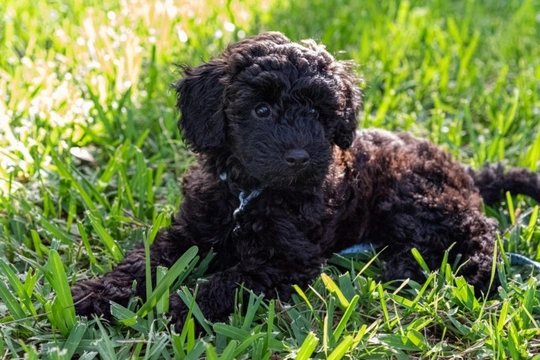
The main characteristics of the Schnoodle dog
The Schnoodle is a cross breed or hybrid dog that is created by crossing a poodle and a miniature schnauzer, to produce a very adaptable domestic dog that combines all of the best traits of both breeds. Hybrid crossings are not classed as pedigree dog breeds, although some crosses are actually more popular and more widely owned than many true pedigree breeds, and often, priced accordingly.
The poodle is by far the most popular pedigree breed used in deliberate hybrid crossings, as the poodle is intelligent, friendly, smart and personable, as well as having a very low shedding coat, which may prove less of an allergenic trigger for people prone to allergies to dogs than most breeds. While the Schnoodle tends to possess a coat similar to the poodle, the miniature schnauzer side of the breeding makes their coat somewhat prone to variance, and there is no guarantee as to what type of coat any given Schnoodle will have!
If you have fallen in love with the Schnoodle and are wondering if a Schnoodle might be the right choice of dog for your family, in is important to spend as much time around dogs of the type as possible, and find out as much as you can about their core traits and characteristics. We will look at these factors in more detail within this article.
Intelligence levels
The poodle is a highly intelligent dog breed, second only in the canine smart rankings to the border collie. The schnauzer on the other hand, comes in at around the middle of the pack across all breeds, and so the Schnoodle should be of medium-high to high intelligence, making them smart, streetwise, quick to learn, and amenable to training.
However, very intelligent dog breeds also have a tendency to get bored easily, and so require plenty of entertainment and things to do, and they will not thrive if left alone for long periods of time. Training a very intelligent dog also requires a trainer and handler that is on the ball and adaptable in order to keep up with the dog, and to channel their natural intelligence in the right direction.
Alertness
Both the poodle and the schnauzer are alert, bright and watchful dogs that are rarely caught napping when something is going on! The Schnoodle is likely to know exactly what is going on around them at any given time, and they will not take kindly to missing out on getting involved! They also make for good watchdogs for this reason, and will soon alert you to the approach of someone. However, they are more effective as watchdogs than they are as guard dogs.
The Schnoodle coat
The poodle coat is tightly curled and sheds very little, and the hair that is shed tends to get trapped and retained in the coat. The schnauzer coat is longer and straighter, and so the Schnoodle coat tends to fall between the two, being wavy to curly but not as tightly knit as the poodle coat.
The coat of the Schnoodle may prove to be less of an allergenic trigger than that of dogs that shed heavily, but no dog is truly hypoallergenic, and it should not be taken as a given that the Schnoodle is a good choice for allergy sufferers. The Schnoodle coat requires regular brushing and grooming, and possibly clipping and trimming to keep it neat and in good order.
Schnoodle size
There is no given set size range for the Schnoodle, and their size will greatly depend on the size of the two parent dogs. While it is generally a miniature schnauzer that is used within the crossing, schnauzers can be found in various sizes, from small to very large! The miniature poodle is the poodle size most widely used in the crossing, but again, poodles can range from toy to standard too.
Ergo the Schnoodle may be any size from very small to large, depending on the size of the parent dogs. However, generally dogs towards the smaller sections of the breeds are used to produce the Schnoodle, and the most common size for the type is around 12” tall at the withers and weighing around 20lb.
Exercise requirements
The Schnoodle does not have the highest of exercise requirements like working breeds such as the border collie may have, but they do still require a reasonable amount of exercise. They tend to be lively, alert and busy little dogs that are always on the move, and should be walked at least twice per day for a minimum of half an hour to an hour at a time to keep them happy.
Lots of variety is required to keep the Schnoodle entertained, and this should include on the lead walks, running freely off the lead, interactive play, socialisation and active ongoing training.



